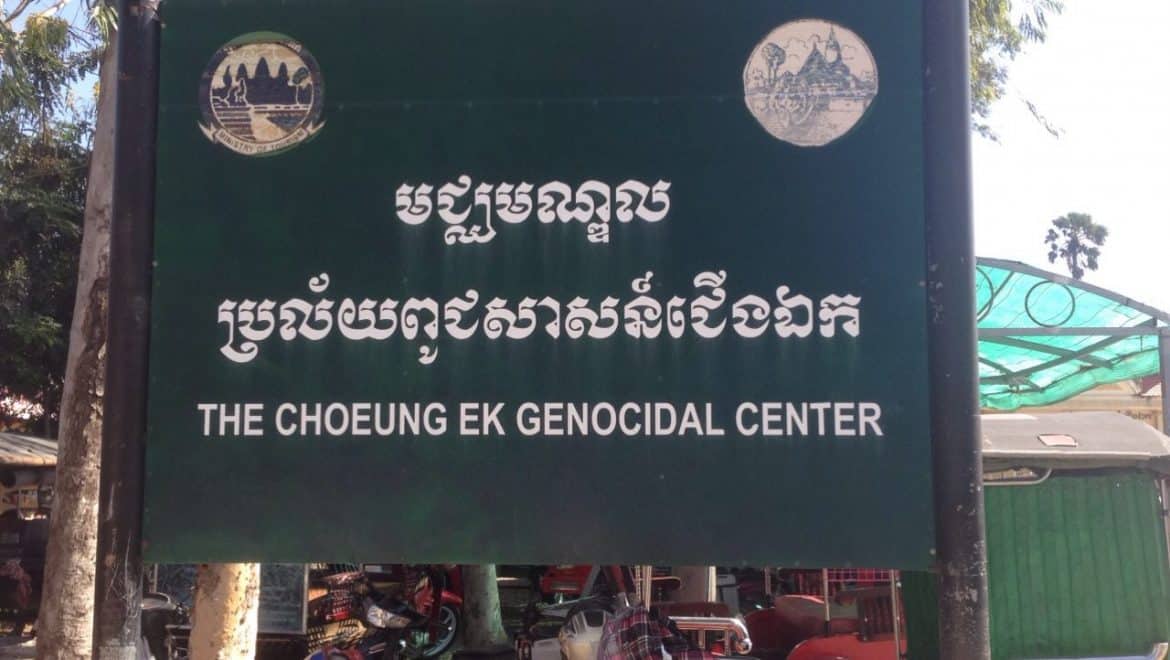While in Phnom Penh Cambodia, I made sure to visit the Killing Fields, to learn about the tragedies, the history and how it has shaped the culture and people’s views of the world.
One evening on my way home from a bustling night market, I caught a tuk-tuk back to my hotel and my driver and I started chatting. He began by asking me the obvious questions: “where are you from, how long are you here for, do you need a driver for tomorrow,” etc.
We laughed and joked despite the obvious language barrier between us. His English was very minimal and my Khmer was next to none, but we didn’t let that stop us. I arranged for him to pick me up the following morning to take me to the Killing Fields.
Soon enough it was my turn to ask questions. I asked him where he was from, how long he’d been a tuk-tuk driver for and how long he had lived in Phnom Penh. He told me that the village he was born in no longer existed, that he had come to Phnom Penh in the 1980’s as a toddler with his mother and that he had spent his whole life raising money with the dream of one day buying a tuk-tuk. He had only owned his tuk-tuk for around five years.

And then I did something stupid: without even thinking about it, I asked him if his family lived in Phnom Penh too, and the air shifted. He responded with a silence that was only occasionally broken with muffled sniffles and low sighs. When we got to my hotel, I gave him an extra ten dollars and shook his hand. He thanked me profusely and drove off in tears, no longer able to hold them back.
Those were tears that I shared the next day when I visited the Killing Fields. I had never seen anything so brutal and inhumane in my life. For the people of Cambodia, the Killing Fields have equated to displacement, execution and mass graves, all of which are a shared family history and the poverty that rips through the country is the phantom of the past that continues to haunt them.

Killing Fields: The Choeung Ek Genocidal Center
Every single person has a story of their own about the Killing Fields and that time; this regime left no one untouched. A museum curator later told me of how he was ripped away from his family as a child and forced to fight a war that he didn’t understand. The Khmer Rouge taught him how to set mines and fire rifles, stripping him of his human right to a childhood. He now dedicated his life to disarming the mines that he had once been a part of placing.
Cambodia is a country of people who are just trying to put each other back together, and in the absence of the ones that were taken from them they share a broken connectedness. They have endured trauma, separation and unspeakable horrors, but in spite of all these things a message echoes throughout the country: “We will never let this happen again.”

Lainie Liberti is a recovering branding expert, who’s career once focused on creating campaigns for green – eco business, non-profits and conscious business. Dazzling clients with her high-energy designs for over 18 years, Lainie lent her artistic talents to businesses that matter. But that was then.
In 2008, after the economy took a turn, Lainie decided to be the change (instead of a victim) and began the process of “lifestyle redesign,” a joint decision between both her and her 11-year-old son, Miro. They sold or gave away all of of their possessions in 2009 and began a life of travel, service, and exploration. Lainie and her son Miro began their open-ended adventure backpacking through Central and South America. They are slow traveling around the globe allowing inspiration to be their compass. The pair is most interested in exploring different cultures, contributing by serving, and connecting with humanity as ‘global citizens.’
Today Lainie considers herself a digital nomad who is living a location independent life. She and her son write and podcast their experiences from the road at Raising Miro on the Road of Life.








